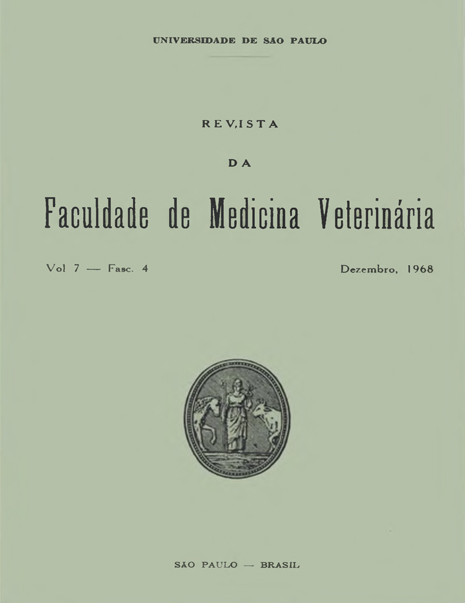Survey of the mineral elements in forages fron limited areas of the São Paulo, Brazil. III — Iron and manganese
DOI:
https://doi.org/10.11606/issn.2318-5066.v7i4p857-870Keywords:
The article has no keywords.Abstract
The authors conducted a survey on the iron and manganese content of Guinea grass (Panicum maximum), Jaragua grass (Hyparrhenia rufa (Nees) Stapf) and Molasses grass (Melinis minutiflora) collected from limited areas in the State of São Paulo, Brazil. These samples were from four types of soils and two different seasons.
Iron
The analysis of 221 samples examined showed that Molasses grass — Gordura — presented the highest leved of the element, 494 p.p.m. in dry season and 415 p.p.m. in wet season — following was Jaragua grass — with 247 p.p.m. and 266 p.p.m. in dry and wet season, respectively, and finally, Guinea grass — Colonião— with 119 p.p.m. in dry season and 114 p.p.m. in the wet season. All analysis were made on a dry matter basis. The interesting point about these observations is that the iron content in Molasses grass (Gordura) is exceptionally high in comparison with other studied grasses. In dry weather, these grasses should provide the animals with many times their minimum requirements of this element they would in wet weather (Table I and Figure I).
Manganese
The analysis of these grasses showed as well that there were significant differences in the manganese levels among forages. The Guinea grass (Coloniao) exhibited significantly higher concentrations of manganese than the Jaragua and Molasses grasses. Also as ocurred with the iron, the highest values were found in ihe dry season (table II and Figure II). In spite of the large variation verified among grasses and types of soils, the manganese levels, in broader terms, showed values in normal range. However, there were some areas where the plants presented excessive manganese levels 267 p.p.m. (dry season) in soil S, and 326 p.p.m. and 224 p.p.m. in the dry and wet seasons (soil S.) respectively especially in the Guinea grass. Since these roughages contain high amounts of iron and manganese, it seems unlikely that most beef or dairy cattle rations require iron or manganese supplement, especially for grazing ruminants. Hence further studies of the minimum requirements of ruminants for iron and manganese, and its availability, are clearly necessary.


